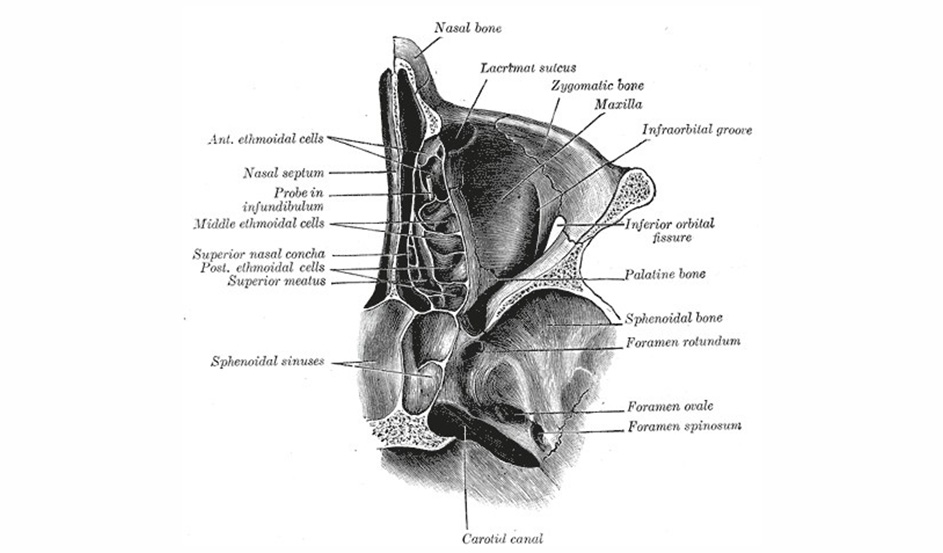
TASTE 101: BIOLOGY BASICS – PART 2
The nose is a sensory organ crucial for sensing what we eat. Whereas with the mouth we speak of “tastants” when we talk of the chemicals that excite our tastebuds, we use the word “odorant” to refer to the volatile chemical compounds that excite the receptors in our nose.
Specifically, the region that is affected by odorants is the olfactory epithelium region (Regio olfactoria) that is located on the roof of the nasal cavity (actually there are two, below each eye, inside the sinus).
This regio olfactoria is about 2.5 square centimeters in area and contains some 50 million primary sensory receptor cells.
Odorants must be able to partition into (dissolve and move through) the mucus that lies over the olfactory epithelium. Such chemicals are volatile, water soluble, miscible into lipids (can dissolve into fats), as well as several other characteristics. This could serve as a severe barrier but in fact non-mucus dissolvable odorants can be chaperoned across the mucus barrier by “odorant binding proteins” or “lipocalins”. These proteins allow for a selective sensing of these non-mucus soluble odorants (selective barrier method).
There is a second type of smelling called trigeminal chemoreception which detects mechanical and temperature related stimulation (found in the mouth, nose and eyes). Chemicals that excite these sorts of sensory cells tend to be perceived as mechanical or temperature in nature. For example, the volatile chemical that gives peppers their heat, capsaicin, affects the trigeminal chemoreceptors and is sensed as heat versus a certain smell. Other examples include menthol, camphor, mustard oils, onion odors
A third type of smell sense is called; vomeronasal chemoreception. Scientists are currently testing to see if humans have a functional vomeronasal organ (VNO), found in all mammals. This is an interesting type of smelling in that it seems to use different receptors and is not linked through the brain. This sort of smelling is social, relating to inter-animal relationships and chemoreception through the VNO affects social behavior. Pheromones are detected by this gland. If indeed humans have a functional and not just vestigal VNO we would not be consciously aware of detecting anything because the VNO works outside of the brain, directly on our bodies.
Receptors of Olfaction
Getting down to business, one should ask “How do those chemosensory cells detect odorants?”
As with so much found throughout our bodies, signals are mediated by proteins embedded in the surface of the receptor cell. These proteins have the ability to bind odorants and then activate signaling inside the cell, leading to sensation.
Genes for olfactory receptors are legion, some 350 receptor genes have been identified in man. This is a huge number of genes, less only than the very large family of genes involved in immunity, an enormously complex system.
What we sense as a vague gradient of recognizable and not so recognizable smells in our environment is actually detected in a very discreet or specific manner. Our ability to interpret what those specific chemicals are may have been more informative eons ago, perhaps similar to the way dogs can detect as yet poorly understood odorants exuded by human cancer patients.
Today, our sense of smell serves us as well as we seem to need it. We no longer forage amongst strange plants to survive and thus we no longer consciously tune into the specific wholesomeness of our food.
What we do retain is a propensity to disdain new taste and odor sensations, a cautiousness that has served us well for millenia.
But, as most foodies and gastronauts know intuitively, we monkeys are powerful curious and some of us put just about anything in our mouths, at least once
Read more at http://nikas-culinaria.com

